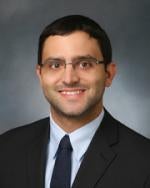Addressing a decision granting summary judgment of invalidity due to lack of sufficient written description and noninfringement, the US Court of Appeals for the Federal Circuit explained that a patent holder’s contentions were sufficient to at least raise a genuine issue of material fact and thereby avoid a summary determination. CenTrak, Inc. v. Sonitor Techs. Inc., Case No. 17-2510 (Fed. Cir. Feb. 14, 2019) (Chen, J).
CenTrak sued Sonitor for infringement of a patent directed to locating portable devices using ultrasonic signals. Sonitor responded by asserting invalidity based on lack of written description for claims directed to using ultrasonic signals. All of the embodiments described in the patent involve infrared signals rather than ultrasonic, but the specification included two sentences stating that the inventors also contemplated using ultrasonic signals. Sonitor also asserted noninfringement because Sonitor did not sell pre-existing networking elements that were used in final assembly of the accused system.
Sonitor moved for summary judgment on both grounds, which the district court granted. Regarding invalidity, the district court held that mere contemplation of using ultrasonic signals was not sufficient written description support in view of the technological differences from the infrared signals used in the detailed embodiments. As for noninfringement, the district court held that Sonitor’s contribution of a portion was insufficient to qualify as making the infringing system. CenTrak appealed.
The Federal Circuit reversed both the invalidity and noninfringement decisions. As for written description, the Court distinguished the patent’s explicit contemplation of ultrasonic signals from previous cases where written description was found to be lacking because there was no mention or reference whatsoever to the alternative approach. The Court found that the mention of ultrasonic signals was enough to avoid summary judgment, and explained that the ultimate resolution would depend on a factual determination about the complexity and predictability of the particular technology at issue.
As for noninfringement, the Federal Circuit explained that completing a system can in fact constitute an act of infringement. The Court distinguished previous cases where a party that contributed a portion of a complete infringement was held not to be an infringer, but pointed out that in each case, someone else who completed the assembly was identified as the potential infringer.




 i
i
